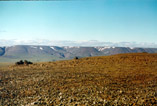
Byrranga mountains in their west and central parts are characterized by steep slopes and flat uninhabited peaks, where there are only separate plants upper than 450 m (photo by M.V. Orlov)
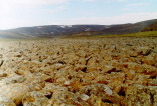
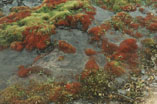
Only on bogs under the snowfields, it is possible to find dense cover of mosses, dark-red colored Bryum cryophillum moss predominating here.
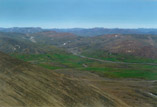
Relief of east part is more divided. This is plateau with chaotic disposition of ridges and salient peaks
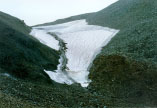
However, Byrranga mountains are not lifeless. For example, there are such bright meadows in low part of slopes…
... in intermountain valleys 2 m high willow shrubs are observed sometimes (willow of zonal tundra reaches such large size only in 200-300 km to the south).
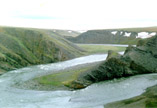
Mountains are divided by deep canyons (Dyabaka-Tary river)……
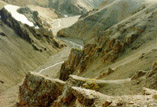
……and ravines with steep friable slopes.
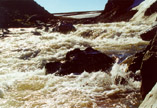
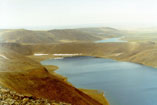

In the central part of Byrranga mountains, the deposits of limestone are widely distributed, they are well-noticed by white color (Levinson-Lessing lake).

Sometimes, limestones are reddish.

Frosty weathering and karst make limestone massifs fantastically-shaped.
Dolerites are also often observed to form Byrranga mountains. Dolerites are less suggested by weathering, they are only broken into blocks, forming the stone deposits.